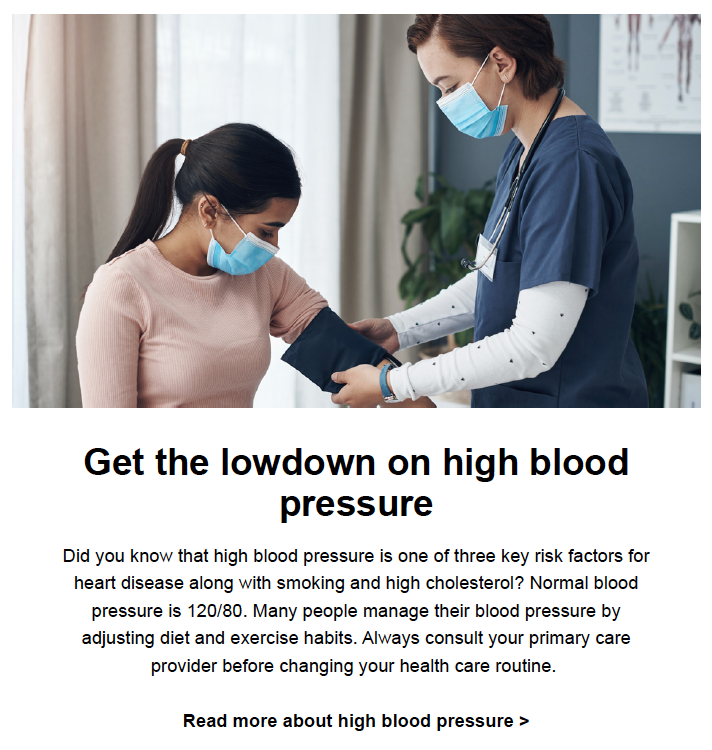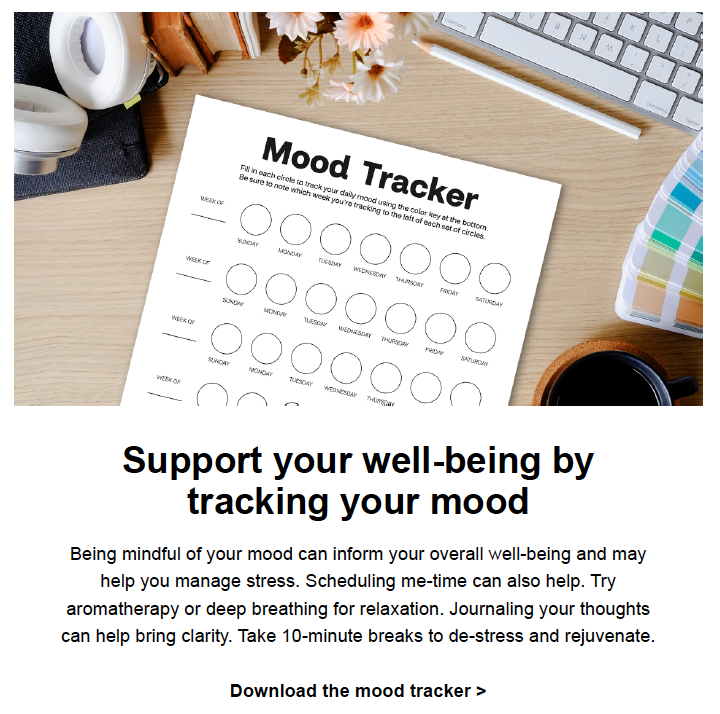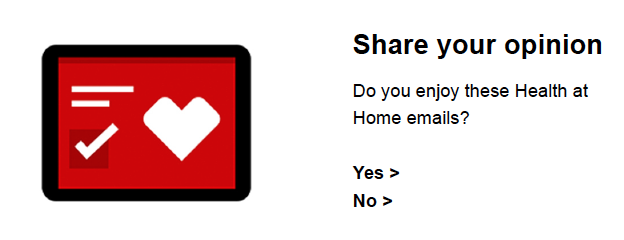What to Learn from CVS on Chronic Condition Management Communications

As is with most people scanning scores of emails in their inboxes, the ones that stand out to me are the ones that speak to me, personally. This CVS email caught my eye and undoubtedly won engagement with others like myself because the email is:
- Personally targeted
- Heart disease is the leading cause of death for women in the U.S., and the risk increases with age. As someone in that demographic, I care about heart health. CVS obviously used their data information in targeting this message to me. Plus, I am sure it was no accident that I received the email in February, which is American Heart Month.
- Built on trust
- Because CVS is a healthcare company and I’m a customer, it makes complete sense for CVS to educate me on a health matter. I trust them as a health expert and I am motivated to hear what they have to say.
- Educational and motivational
- The email promised information about improving heart health and got right to it. Using brief, easy-to-understand bites of educational content, the email offered actionable tips to work toward better heart health.



Research shows that patients’ engagement and behavioral adherence are stronger when they have understanding – or health literacy – about health conditions. In the CVS email, not only did each piece of information promote health literacy about better heart health, but the content also offered the choice to level up in knowledge by clicking on links for additional details. The email left me empowered to choose to follow one or several of the suggested actions to improve my health.
The email was not alarming, prescriptive, or transactional — except for one request to rate the content with a thumbs up or down, which will help CVS determine whether to keep sending me content of this nature.

The approach and simplicity offer a lesson for payers and population health management companies looking to improve member engagement. Sometimes, all people need to be nudged to better health is simple, relatable communication. Success in taking small steps can lead to bigger ones.
For payers and population health management companies to successfully use this approach for chronic condition management, the apparent simplicity requires an underpinning of strategy and an understanding of the target audience. Distinct types of intervention are appropriate at various stages of risk or diagnosis with a chronic condition. With that in mind, it would be most advantageous to implement an approach analogous to CVS’s with people whose health outcomes may be most impacted by education and improved adherence — for example, those with pre-diagnosis health markers or who are lightly to moderately affected by a chronic condition. It also makes sense to plan for multiple touchpoints with the targets to increase the probability of completing a successful connection and achieve frequency in message delivery, both of which are key to gaining mindshare and uptake.
Measures that payers and population health management companies may take to improve health communications and outcomes for these at-risk members include:
- Personally target communications
- Use data information to stratify members who are at risk for a particular health condition and build a list with all available information for each contact — email, direct mail, phone and SMS. Population segments may be grouped by condition status, ethnicity, age, income, location, primary language or other factors. This will help sync media selection and facilitate appropriate creative and content development for the target population.
- Build trust with your target population
- Understand the nature of your organization’s relationship with the audience and why targeted individuals will believe you are invested in their well-being. The context of your outreach needs to make sense and feel genuine.
- Educate and activate
- To successfully educate and activate a target population, payers and population health management organizations need to understand the segment’s cultural, lifestyle, and exercise identity. This will help develop relatable, engaging communication at an appropriate level of health literacy.
- The CVS email touched on three critical components of health management: exercise, monitoring health markers and diet. Examples of using population intelligence to personalize messaging, for example, to a low-income population, means that exercise recommendations need to be realistic for someone with limited time and resources; recommendations for monitoring health markers must leverage tools or services that are accessible (e.g., send a periodic text with a link to click on a mood icon to check stress level, deploy a field team/mobile vehicle for on-site health screening); and diet recommendations need to be affordable, convenient and sensitive to cultural preferences and traditions. Visuals in communications should also reflect the targeted population, so they may self-identify with the content.
Any plan to engage a population in more active health management for a chronic condition must also include a strategy to help maintain adherence over time. This could include ongoing communication through opt-in emails, texts, e-newsletters, webinars and seminars, videos, private social media groups and periodic phone calls. As CVS recognized, learning how to help people lead healthier lives is not just about telling, it is also about listening. A regular survey of the target population can provide insight as to whether the communication is helpful and what other content or support could be added. It is a process, but where small individual steps are facilitated, the outcome down the road may be a leap for the whole community.








